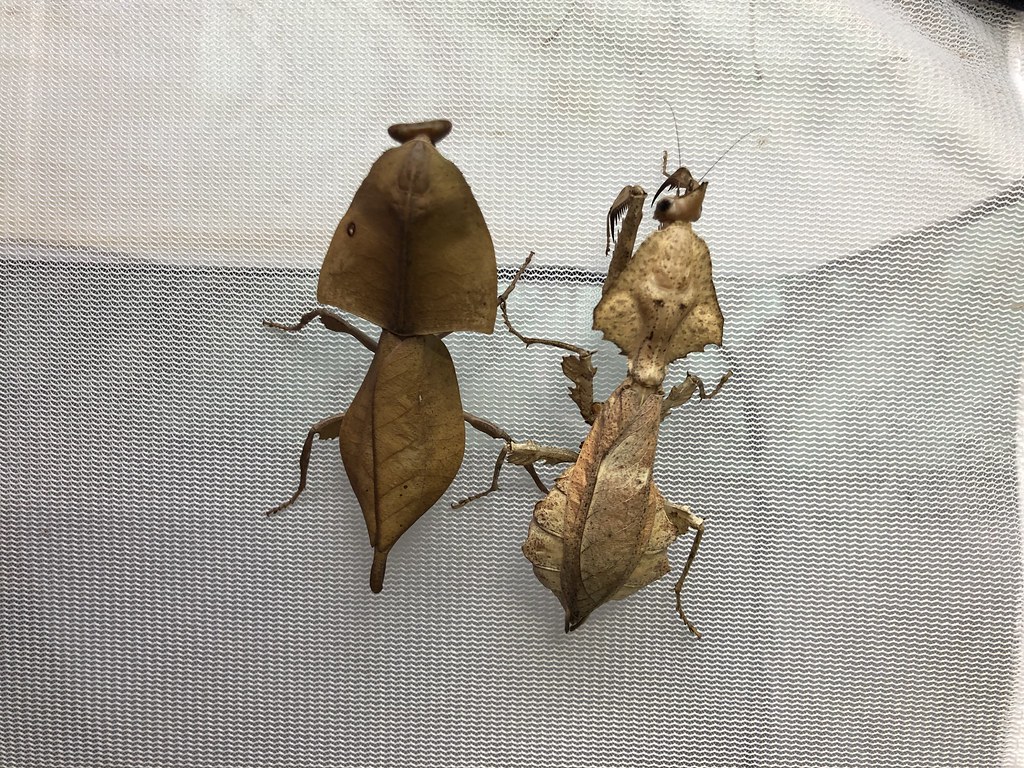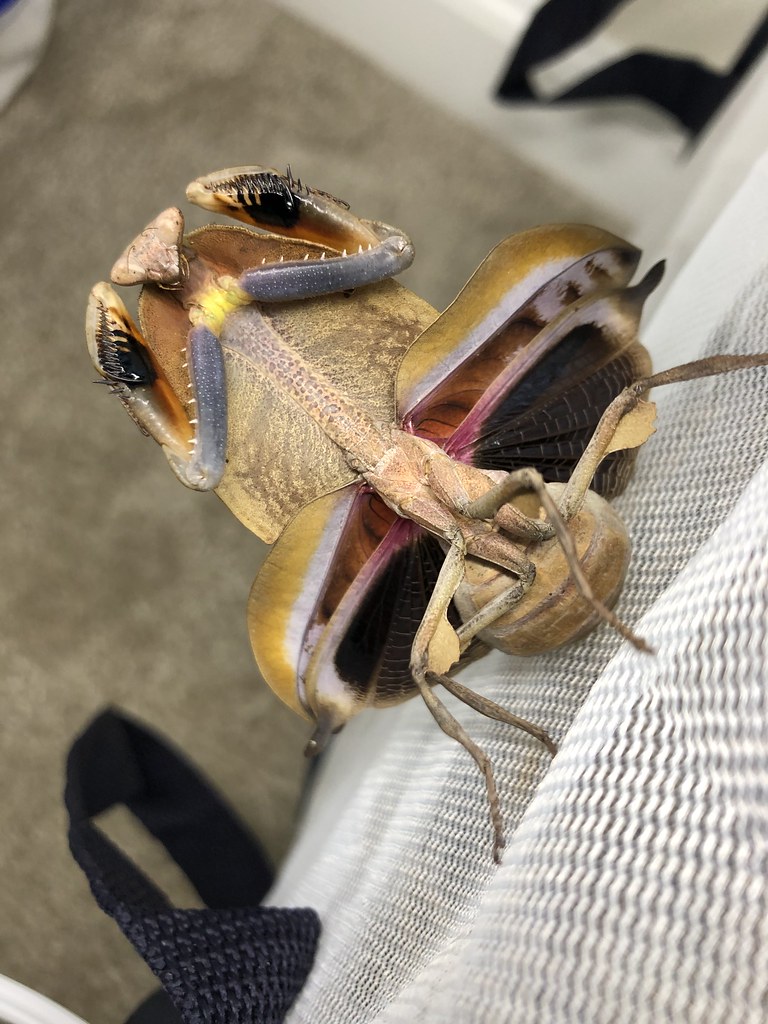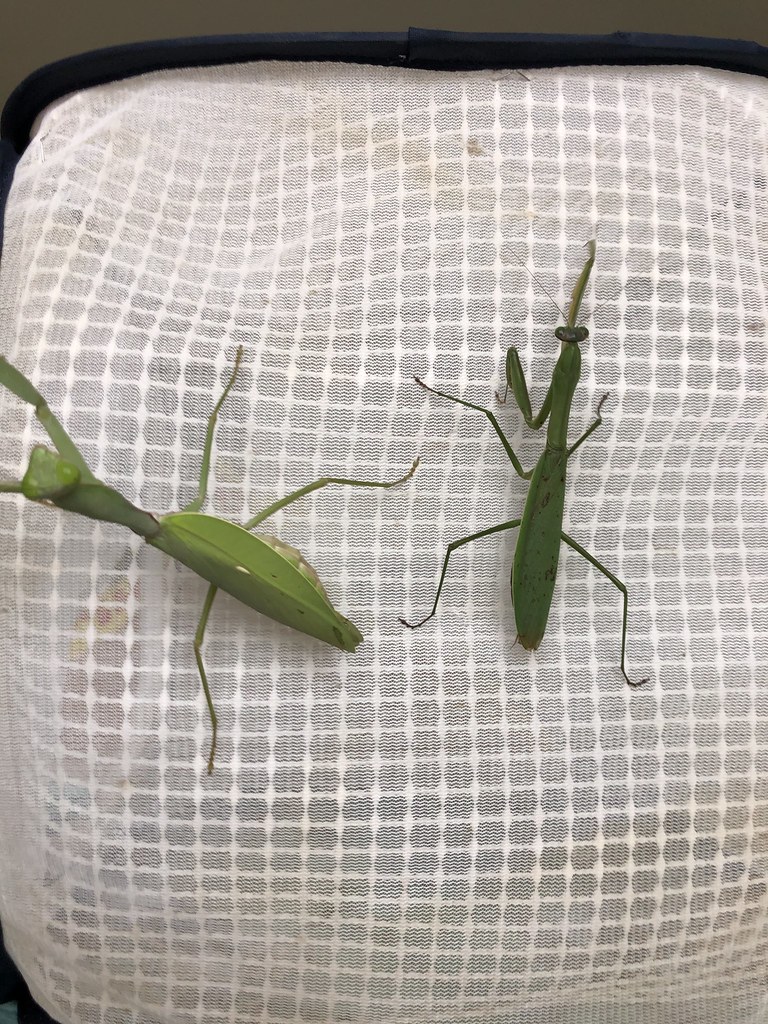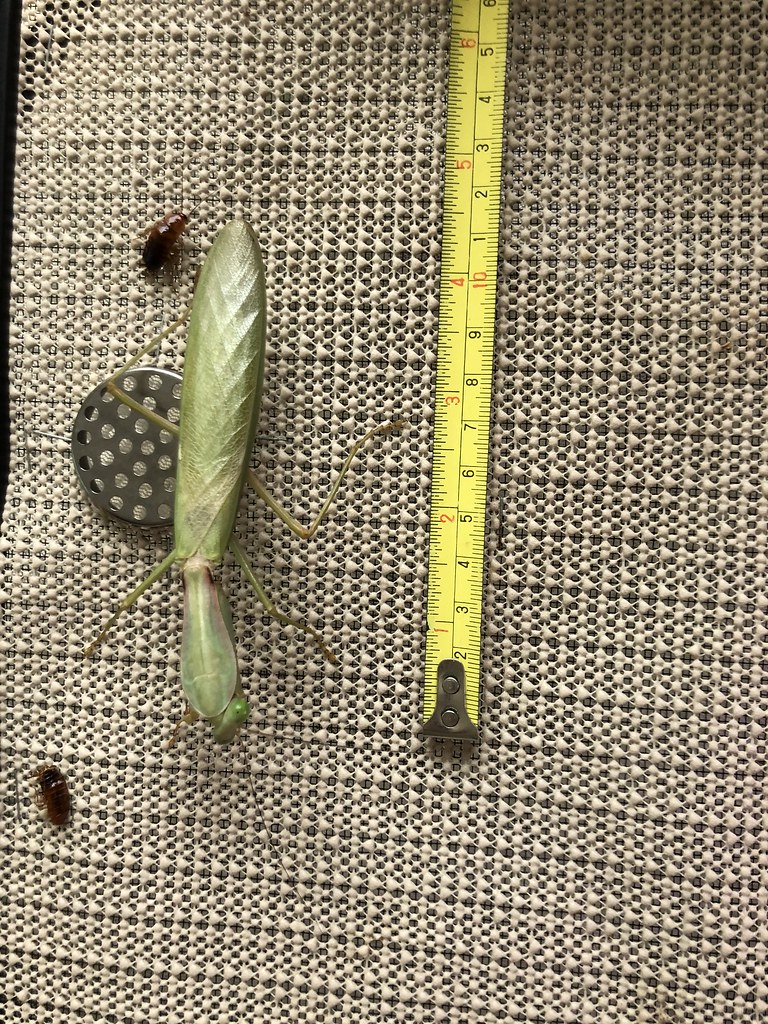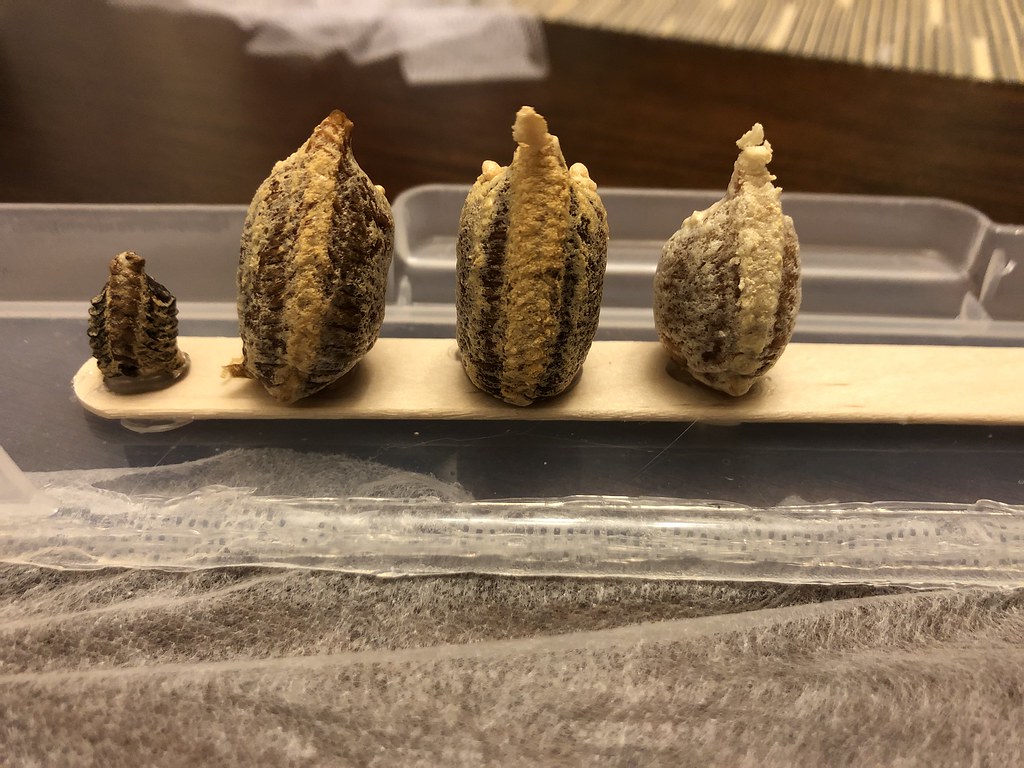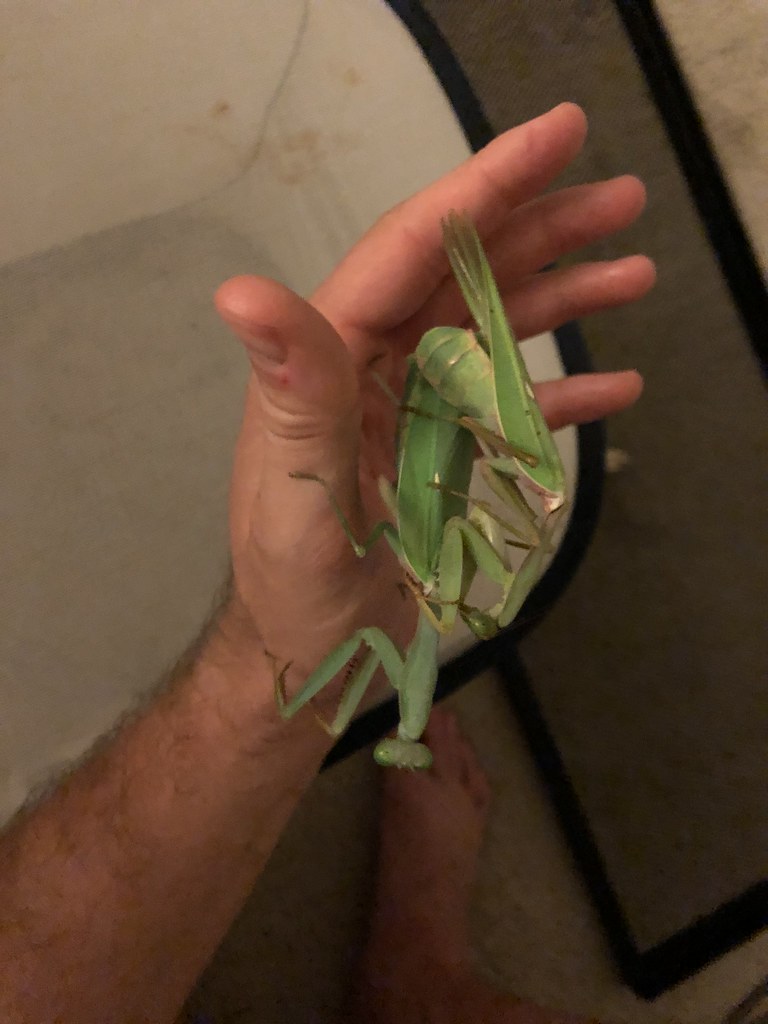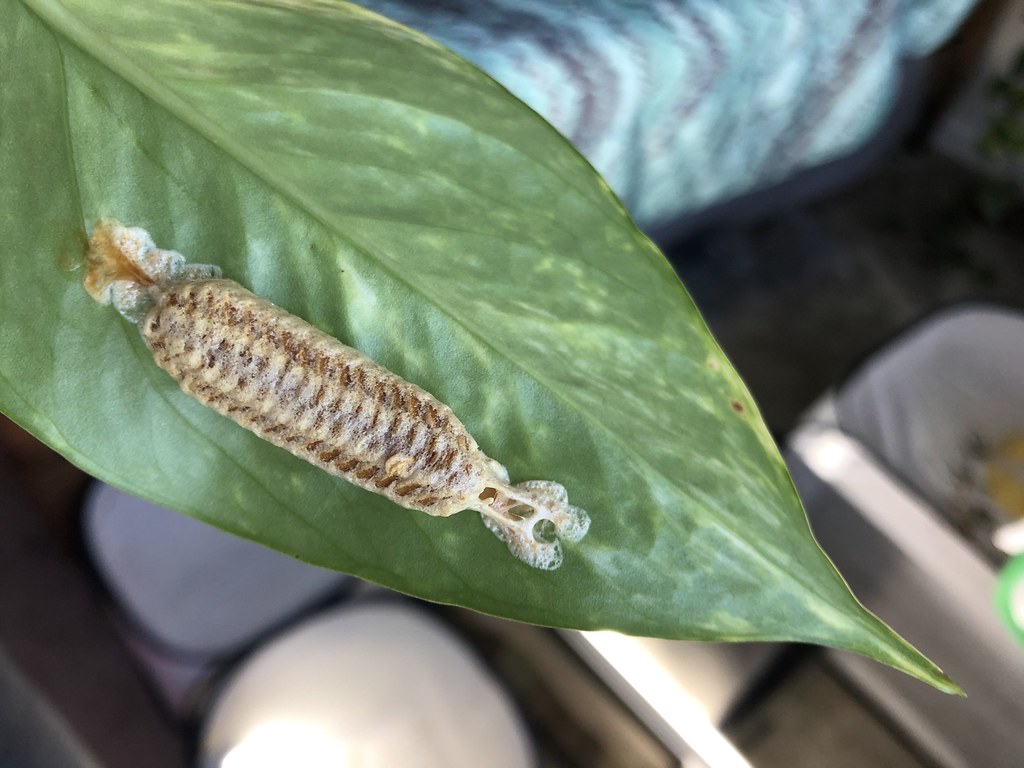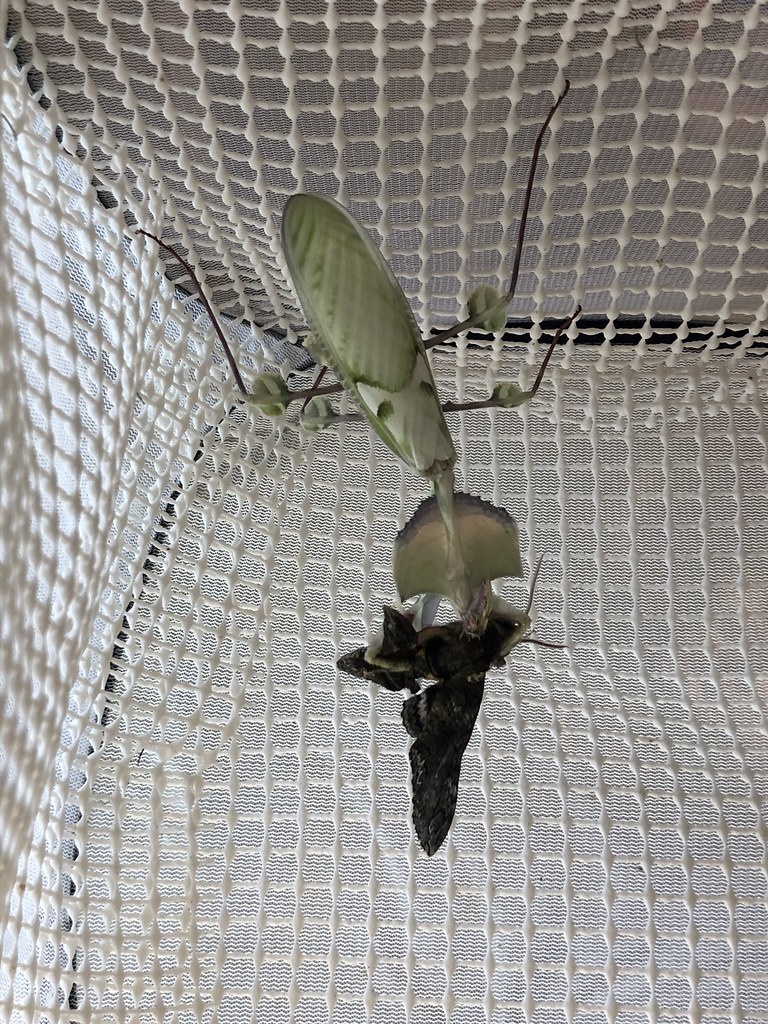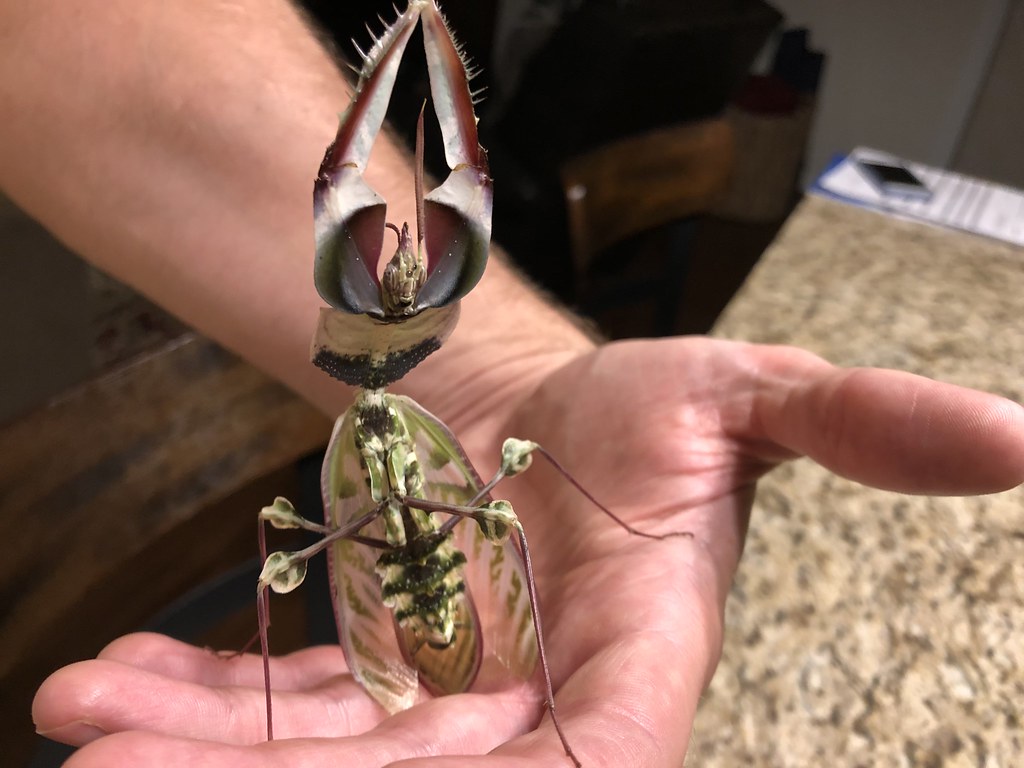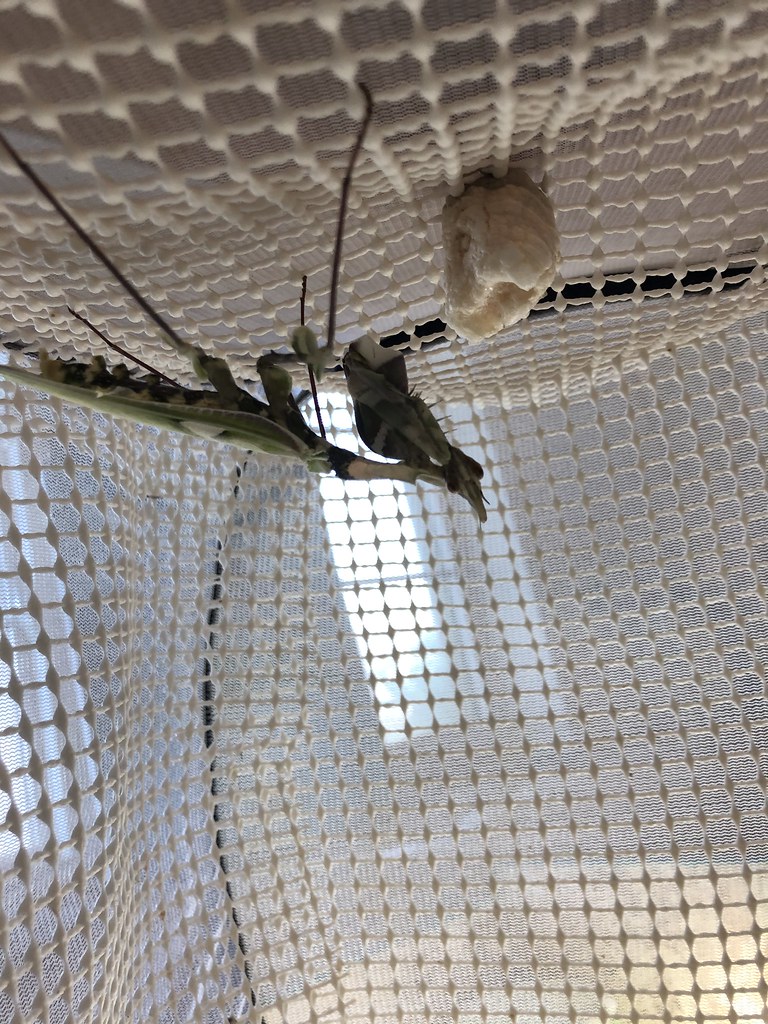You are using an out of date browser. It may not display this or other websites correctly.
You should upgrade or use an alternative browser.
You should upgrade or use an alternative browser.
Recent Breeding Pics et al
- Thread starter guapoalto049
- Start date

Help Support Mantidforum:
This site may earn a commission from merchant affiliate
links, including eBay, Amazon, and others.
MrGhostMantis
Well-known member
Beautiful mantids! Can’t wait for my Idolomantis to mature out.
mantisfan101
Well-known member
- Joined
- Aug 7, 2017
- Messages
- 356
- Reaction score
- 69
Nice, good luck with the parablepharis!
Mantid-Tim
Well-known member
Great job with the enclosure. I assume (or maybe didn't read) that you have a lighting system. With a good hygrometer/thermometer mantis raising is basically keeping those in range for whatever the species requires. I don't mean to be reductive but enclosure as a prerequisite and temp and humidity kept nominal, and feeding of course at a regular schedule, the rest falls into place...!
I know you all know that, I guess that's just how I look at keeping them alive. Keeping the numbers and feeding schedules correct.
I know you all know that, I guess that's just how I look at keeping them alive. Keeping the numbers and feeding schedules correct.
Last edited by a moderator:
MrGhostMantis
Well-known member
Oh, you also just proved my idea of using hawk moths form horn worms as feeders for adults, thanks for that.

$79.95 ($1,279.20 / lb)
4Pack Fruit Fly Culture Live Flightless Gecko Spider Lizard Dart Frog Praying Mantis Food
Creation Cultivated

$49.99 ($0.25 / Ounce)
TC INSECTS . 1000+ XS Red Runner Live Roaches Food for Dart Frogs Praying Mantis Spiders Small Lizard Tropical Fish (1/16-1/4 in)
TC INSECTS

$29.99 ($0.15 / Ounce)
TC INSECTS . 200+ XS Red Runner Live Roaches Food for Dart Frogs Praying Mantis Spiders Small Lizard Tropical Fish (1/16-1/4 in)
TC INSECTS

$14.99 ($0.47 / Ounce)
Fresh Fruit Fly Culture (Drosophila Hydei) - Praying Mantis Mantid Frog Lizard Food - 32oz Cup
Surmen Legacy

$12.49 ($0.02 / Count)
Predator Foods Bulk Live Mealworms - 500 Count (Medium - 0.5")
Predator Foods

$15.99
$19.99
RESTCLOUD Insect and Butterfly Habitat Cage Terrarium Pop-up 23.6 Inches Tall
Restcloud

$39.95 ($1.25 / Ounce)
Creation Cultivated 32oz Fruit Fly Culture - Live Feeder Insects for Praying Mantis, Jumping Spiders, Geckos, Lizards, Dart Frogs (Drosophila Hydei Flightless)
Creation Cultivated
guapoalto049
Well-known member
Hawk moths are great for Idolomantis since they take so much biomass to fill up. I don’t use these regularly, just in certain scenarios like when adult female Idolos are gravid.Oh, you also just proved my idea of using hawk moths form horn worms as feeders for adults, thanks for that.
MrGhostMantis
Well-known member
I was contemplating using it for gravid females. They are also a pain to raise form the wormsHawk moths are great for Idolomantis since they take so much biomass to fill up. I don’t use these regularly, just in certain scenarios like when adult female Idolos are gravid.
guapoalto049
Well-known member
Light intensity and wind/airflow are the two most neglected aspects of the microclimate in the hobby. The majority of species take advantage of both in nature, so they shouldn’t be ignored if you want success.Great job with the enclosure. I assume (or maybe didn't read) that you have a lighting system. With a good hygrometer/thermometer mantis raising is basically keeping those in range for whatever the species requires. I don't mean to be reductive but enclosure as a prerequisite and temp and humidity kept nominal, and feeding of course at a regular schedule, the rest falls into place...!
I know you all know that, I guess that's just how I look at keeping them alive. Keeping the numbers and feeding schedules correct.
Humidity is a bit overstated in most cases. It’s the hydration of the mantis that improves its ability to expand and slip out of the exhuvia/old skin. Humidity increases are usually at the expense of less airflow, which is problematic. 50-60% RH with daily misting is a recipe for success for all the species above. Very thin species are prone to desiccation at young instars, so daily misting with higher RH for them is one exception to the rule
guapoalto049
Well-known member
Big pain, but the only real Lepidoptera option during winter months! They’ll take red runners regularly though tooI was contemplating using it for gravid females. They are also a pain to raise form the worms
Mantid-Tim
Well-known member
What do you mean by light intensity. Can you elaborate?Light intensity and wind/airflow are the two most neglected aspects of the microclimate in the hobby. The majority of species take advantage of both in nature, so they shouldn’t be ignored if you want success.
Humidity is a bit overstated in most cases. It’s the hydration of the mantis that improves its ability to expand and slip out of the exhuvia/old skin. Humidity increases are usually at the expense of less airflow, which is problematic. 50-60% RH with daily misting is a recipe for success for all the species above. Very thin species are prone to desiccation at young instars, so daily misting with higher RH for them is one exception to the rule
MrGhostMantis
Well-known member
Yeah, I also found they will choose favorite feeders...some refused redrunners altogether but viciously attacked flies and likewise.Big pain, but the only real Lepidoptera option during winter months! They’ll take red runners regularly though too
guapoalto049
Well-known member
In nature, the intensity of light is almost always higher than captivity. This is particularly the case with grassland species. The light cycling from bright to dark has hormonal and behavioral implications in many insects, mantises are likely no different.What do you mean by light intensity. Can you elaborate?
Mantid-Tim
Well-known member
So do you think putting them under LED lights and a more consistent night day schedule would be beneficial for them? I did so recently for temperature and aesthetic reasons.In nature, the intensity of light is almost always higher than captivity. This is particularly the case with grassland species. The light cycling from bright to dark has hormonal and behavioral implications in many insects, mantises are likely no different.
MrGhostMantis
Well-known member
I mean, it would make sense. It would be more similar to a natural day/night schedule.So do you think putting them under LED lights and a more consistent night day schedule would be beneficial for them? I did so recently for temperature and aesthetic reasons.




